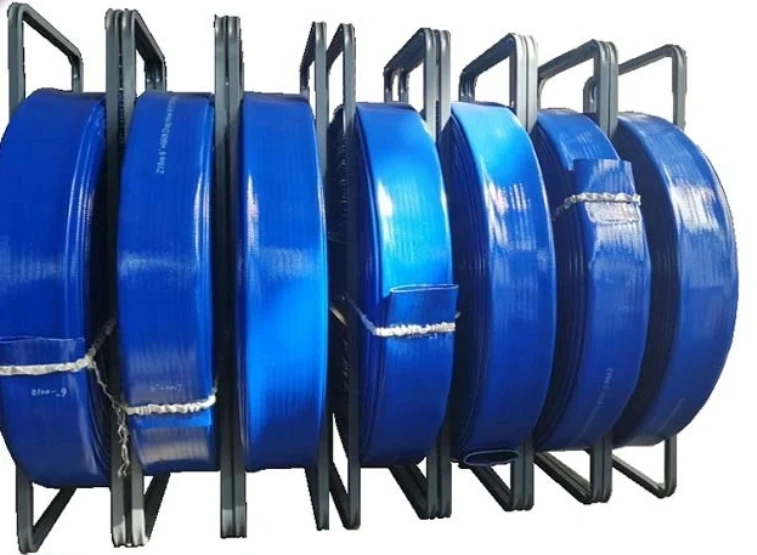Choosing the Right Size for PVC Hoses in Your Applications
Understanding PVC Hose Sizes A Comprehensive Guide
When it comes to purchasing the right PVC (Polyvinyl Chloride) hose for your needs, understanding the sizing system is crucial. PVC hoses are widely used in various industries, including agriculture, construction, and manufacturing, due to their flexibility, durability, and resistance to chemicals. However, one common issue people face is choosing the appropriate hose size. In this article, we'll delve into the essential aspects of PVC hose sizes, helping you make informed decisions for your projects.
Why PVC Hose Size Matters
The size of a PVC hose affects its performance in several critical ways. First, the diameter of the hose influences the flow rate. A larger diameter allows for a higher volume of fluid to pass through, making it suitable for applications requiring rapid delivery of liquids, such as in irrigation or drainage systems. On the other hand, a smaller diameter hose may be ideal for controlled flow in applications like aquarium setups or laboratory environments.
Moreover, hose length also plays a significant role. Longer hoses can create added pressure drop, leading to reduced flow rates. Therefore, considering both the diameter and length is essential for ensuring optimal performance for your specific application.
Common Sizes of PVC Hoses
PVC hoses come in a variety of sizes, typically specified by their inner diameter (ID) and outer diameter (OD). Some common sizes for PVC hoses include
- 1/2 inch (12.7 mm) - 3/4 inch (19.05 mm) - 1 inch (25.4 mm) - 1 1/4 inch (31.75 mm) - 1 1/2 inch (38.1 mm) - 2 inch (50.8 mm)
These sizes can vary depending on the manufacturer, so it’s always recommended to check the specifications before making a purchase.
Measuring PVC Hose Size
pvc hose size

To ensure you're choosing the correct hose size, measuring the diameter is crucial
. Here’s how you can do it1. Inner Diameter Measurement Use a caliper or a measuring tape to measure the internal diameter of the hose at several points to ensure consistency. 2. Outer Diameter Measurement Similarly, measure the outer diameter. This can be important for fitting compatibility, especially when connecting multiple hoses or fittings.
3. Wall Thickness Don’t forget to measure the wall thickness of the hose, which can impact its overall flexibility and durability. Thicker walls usually provide increased pressure resistance.
Applications and Recommendations
Choosing the right PVC hose size is essential based on its intended use
- Agricultural Applications For high-volume water flow or fluid transfer, a larger diameter hose (1 inch or more) is recommended. - Construction Depending on the project needs (e.g., concrete placement or water transfer), sizes may vary from 3/4 inch to 2 inches.
- Household Use For garden hoses or small repairs, 1/2 inch or 5/8 inch hoses are typically sufficient.
When in doubt, consulting with a knowledgeable supplier can help you select the right size for your specific application.
Conclusion
In summary, understanding PVC hose sizes is fundamental to successful projects across various applications. By considering both the inner and outer diameter, alongside the hose's length and wall thickness, you can ensure optimal fluid flow and performance. Always prioritize your specific requirements and consult with professionals when necessary to mitigate potential problems associated with incorrect sizing. Ultimately, the right PVC hose size can save you time and costs, enhancing the efficiency of your operations.
-
Top Quality Oxy Acetylene Hoses for Sale Fit for Welding DemandsNewsJul.28,2025
-
The Future of Pneumatic Air Tubes in IndustryNewsJul.28,2025
-
Superior and Reliable LPG Hose Pipe Solutions for Every NeedNewsJul.28,2025
-
Exceptionally Durable and Versatile Premium Braided PVC TubingNewsJul.28,2025
-
Best Adapters for Connecting Garden Hose to PVC Pipe ConnectionsNewsJul.28,2025
-
The Essential Role of LPG Hoses in Safe and Efficient Gas DistributionNewsJul.16,2025














